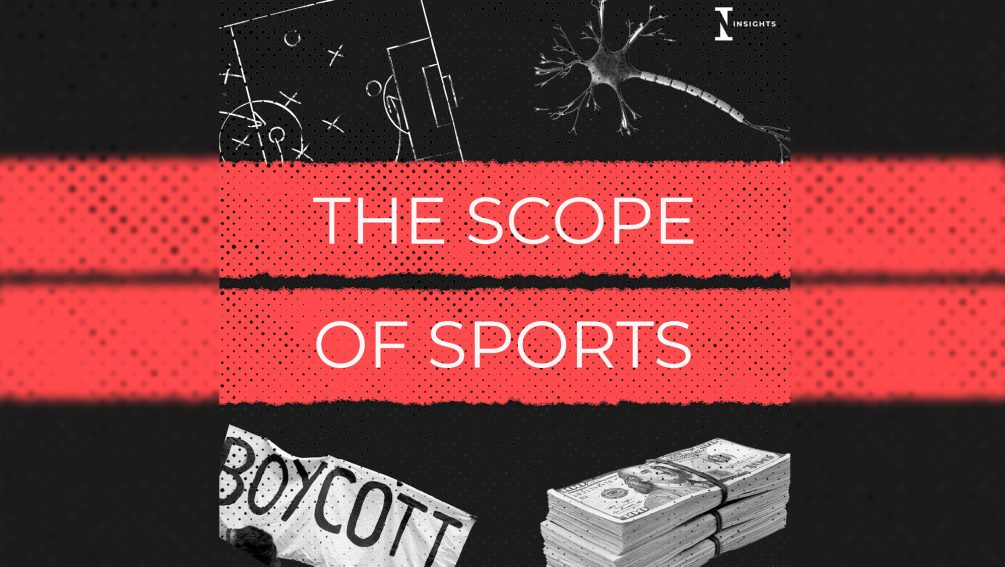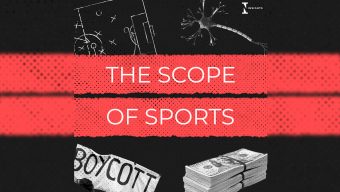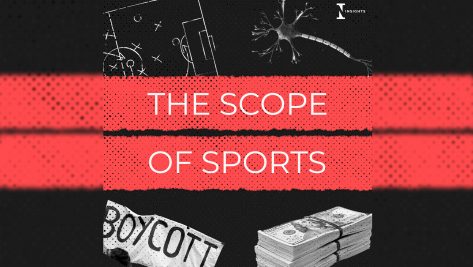Scope of Sports Ep 5: Sports, Data, and Predicting Injuries

Injuries can end an athlete’s dream or derail a team’s season. But what if we could predict when an injury was going to occur? In this episode, we speak to Dae-Jin Lee, an applied statistician and professor at IE School of Science and Technology, who recently researched how advanced statistical methods can help in predicting sporting injuries.
© IE Insights.
Transcription
Alex Cope: For any sportsperson or indeed, for any fan, one of the most infuriating and at times distressing aspects of sports are the injuries. They can end an athlete’s dream or derail a team’s season. But what if we could predict when an injury was going to occur? Today we’re speaking to Dae-Jin Lee, an applied statistician and professor at IE School of Science and Technology, who recently researched how advanced statistical methods can help in predicting sporting injuries.
Hi Dae-Jin and thank you for being here today.
Dae-Jin Lee: Hi, Alex.
AC: So sports injuries can feel, from a fan’s perspective, at least random or caused by unpredictable collisions on the pitch or even freak accidents in some cases. So why are data scientists and computer scientists and statisticians being used to study them?
DL: Okay. That’s a very interesting question. So indeed, in my view, sports injuries are unpredictable. I cannot predict the future. However, statisticians, data scientists can develop models to predict any phenomenon, and there is a long trend of working with models to predict in sports injury. So my field of research recently has been working with specialists in sports field, in football and medical services, in not trying to predict the event of an injury, but trying to determine the risk factors that can induce to a possible injury.
So when we talk about injuries, we are talking about non-contact injuries that are not caused by contact with a person or an object is just muscular injuries or a knee injury, ankle. And some parts of the body that in fact doesn’t allow the player to train or compete.
AC: Okay. And is that the main challenge in predicting these injuries? It is identifying the mechanisms that produce an injury.
DL: Yes. And not only the mechanisms as that’s part of sports medical doctor, that the event of a possible loss of games or training that can be caused by different factors that, of course, are very complicated and complex, but trying to understand the patterns that can induce, statistically speaking, the probability of getting injured by a player.
AC: Okay. And so how did you study these injuries? Was it from gathering data on sports injuries or did you use other techniques looking at training loads and things like that?
DL: Yeah, well, as statisticians, we have to collect data or they have to collect data and that’s pretty important. The quality of the data is important. So there should be people that collect data, not only a training session event, the event of the injury, if the player has injured or not, when and where, but also those external factors that induce possible training, high training load or event of an injury like the stage.
These days technology’s available in most of the team sports and they have devices that they measure the number of accelerations over some certain quantity or a number of distance kilometers to recover.
AC: And is this data newly available? I imagine. I imagine ten, 15 years ago, these kind of data points weren’t available.
DL: That’s a good question. As technology is evolving now, most of the professional teams can purchase or rent devices and they can put it into the players so they can collect data. Yes, 15 years ago, probably some sports had some data available, maybe individual sports. But in team sports, there is a big trend due to technology to make this data available.
AC: And obviously this data comes not from labs or from computer generated software, but from actual athletes working on pitches, in training facilities. So are data scientists working with experts from other fields who are more used to those areas such as sports scientists or those who have expertise on biomechanics, on the movements of athletes in the study of injury prediction?
DL: Yes, it depends on the sports. For instance, if you can imagine cycling, there are a lot of lab experiments in which the cyclist is training either on the bicycle with some devices, a vest with some sensors, and then trying to reproduce the same conditions for a real Tour de France or something. But in sports teams like football that’s my more interesting game that I like.
Yeah technology the vests that you can watch for in the football matches after the game people take the shirt off and then you see some like kind of I call it a bikini, which is something that has a device.
They have like a device on their back and this like a smaller than a smartphone. And it has a gyroscope loop and technology, GPS technology and tracker technology, they put it in a device and then they upload the data and they are analyzed afterwards by coaches and physios to check the load of training, the distances and so on.
And of course, collecting those type of data during training and games make a big database in which a lot of data are created. Also, it is very common these days to have like questionnaires of wellness. So after a training, the rate of perceived exertion. So that’s an internal audit, which means how was the feeling of the player or the athlete after a training or match.
So they are basically this is called a Borg scale in which state of play of the intensity of the training was very high or very low compared to the previous session. So they combine those data, external internal to develop these databases, hopefully to predict, or prevent the event of an injury.
AC: So once you’ve collected and analyzed the data, did it show, for example, a clear relationship between how much a player is playing competitively or their training minutes and their risk of injury?
No, it’s not so clear to see it in the graph or in the plot. Of course, our statistical models are there to unveil the hidden patterns, so estimations on parameters and so on. That is not clear to see. But as I mentioned before, this internal load can reflect the fact that the player has been in an intense week of training.
And then there are some red flags telling the physios and the coaches to say that this player, maybe he’s a high risk because he’s feeling very intense training compared to the rest of the team. Of course, in professional football, if a coach says “Are you ready to play?” the players would say “yes, coach, I’m ready”. And trying to predict that is because there are a lot of psychological factors and many external things that are not predictable itself.
AC: Yeah, because we hear a lot, especially with older athletes, that they know their bodies or they get asked this kind of question and they say, “I know when to take a rest and when not to.” But that’s different to statistical analysis.
DL: Yeah, of course, that the perception of a professional player is very important. And I’m thinking about tennis for, for example, Rafa Nadal, Roger Federer. 15, 20 years ago you wouldn’t see a player at the top level, more than 30 plus. So they are taking care of their bodies. They have a lot of not only physios, nutritionists, psychology specialists, that can help them to understand their body and try to now that those players are selecting those masters or those games that they want to play in.
DL: In other sports, like football or basketball, the season is so intense, especially in those top teams, that they’re playing competitions every two or three days. Sometimes very intense. So stopping and going in injuries is very dangerous not only for team performance but also for the health. There is not much research on athletes in their twenties in which what are the effects of so intense training like, in cycling there are some cases in which at 50 cyclists die for some heart diseases.
DL: It’s something that high intensity sports are quite dangerous for the body. Mm hmm. But the advances of technology in sports medicine, I think, can contribute to better quality of life.
AC: And do you think these statistical models and this research can help to extend the playing careers of people in team sports?
DL: Well, that’s a good question. When we do research, we have to start with a research question that can bring some knowledge, that can contribute to those aspects that you mentioned. Well, this is not like a magic trick in which we can enlarge the life of a professional player. But of course, from the decades and evolving of the science, I can we can contribute and maybe it will be very normal that well to have professional athletes aged 40.
Maybe 40 will be a younger age to develop their career. I don’t know. Hopefully that means that science is contributing to the welfare and quality of life.
AC: And how, from your personal experience, how much do you think professional teams are paying attention to data in terms of managing the loads of their players, or how much are they just listening to the opinions of those players on their own bodies?
DL: That’s a good question. If you think about a team, of course, the medical doctors, the coaches, the physios take care of their players. But there’s another side of this story about the sports industry. If you want to know that most of the data analytics are in scouting, in buying a young player that could be a future Messi or Cristiano and trying to purchase some players.
So that’s another part of data analytics and so on. Performance and medical sports medicine, I know my own experience with a professional team. I think something that if you go to the U.S. or Olympic federations, they have professionals dedicated to performance and medical services. Of course, that’s something that’s also private because you don’t know the history of the injuries of a player.
But I think the research is important to bring some knowledge to society and sports.
AC: And just as a side question to that, how open is the data on injuries in sports? Is it very closely guarded by the teams?
DL: Yeah, that’s a good question. And we can well, you can find some aggregated data and number of injuries for a player within popular web pages from sports. But of course the internal details about the individual’s injury and some treatments are not public. That’s a delicate question. And in general, in science, I am in favor of opening all the data, of course, respecting the privacy, because it can allow us to do better research.
If I can reproduce some analysis from other people in some other part of the world, and then we can improve with the models, then we are taking or bringing additional knowledge to that. But of course, this is private information. It’s not open. Maybe you have general numbers of dates of injury, but not particularly for teams.
AC: Okay, so not the training data or the in-game data?
DL: Yeah, they keep the data like their own treasure.
AC: Yeah, I imagine. And so how do you see the field developing, especially with advances in things like machine learning and with more wearables.
DL: Yeah. So I think that in sports, in any sports we can think about football, but also Formula One or individual sports, the data scientists or you can call them statisticians, I think it is another team member within a group of people that are not specially working with the players, but like nutritionists, psychologists, data science. I think that’s an important role that can be part of a team in the near future.
I’m definitely aware that in the NBA there are analysts trying to analyze the opponent, trying to define some strategies based on some patterns of the strategy of the other team. In other teams, I think that role or that kind of profile will be in the forthcoming years very valuable.
AC: And for data scientists, obviously working within teams of sports scientists or people with knowledge of biomechanics, do you see personally that as more of an exciting development or more of a challenge because they see things so differently to you do?
DL: Well, it’s a challenge as we, in any field, if you collect people that are from different fields, they have to talk to each other and sometimes, many times, communication is a barrier. So understanding that, for instance, you cannot convince a medical doctor that some algorithm will predict or know about their medicine better than a 20-year or 30-year experienced doctor. But maybe with visualizations, with some basic analysis, you can convince or try to convince that you can find some patterns that they are there, of course, but you can help them to get some insights about what is going on.
But, at the first moment, if you try to say that I can predict what will happen to this player, you’re not convincing anyone in that a particular field.
AC: Could you see a future where through advanced statistical methods and working teams like this, we see a genuine lower amount or a lower ratio of muscular injuries in football or in other sports? Or do you think that’s a pipe dream?
DL: Well, I think that that will be possible. So as long time ago, there are other type of injuries like knees. So as technology is evolving and recovery periods are evolving, there are other injuries like hamstrings and so on. I saw an announcement by Nike and for the forthcoming Women’s World Cup in Australia and New Zealand, they have designed a new football boots designed specifically for women.
DL: So they have been doing a lot of research on the biomechanics of women because traditionally the boots were designed for men only and smaller sizes for women. So they apparently have done some development on those specific boots that could potentially have a lower number of injuries for those injuries that are more and prevalence in women because their hips are wider. So the body is different.
So that’s an announcement that probably could be a marketing thing. But I trust that if they’re doing some research and the question is valuable because if they have been thinking that boots haven’t been designed specifically for the women’s body, they do a very interesting research and hopefully will get some impact in there and lowering their interest in women.
AC: And it poses the question as to whether we could personalize equipment for any athlete. If someone has a recurring injury in a certain foot or a certain leg.
DL: Yes. Well, in the development of gear and boots, we can have specific boots made based on the design of my feet or how I walk or how I run to minimize the risk of injury of it.
AC: That’s really interesting. Well, thank you for being here today.
DL: Thanks, Alex.
AC: That was Dae-Jin Lee, a professor at IE School of Science and Technology Our thanks to him, and a link to his full research, entitled “Can we really predict injuries in team sports?” will be provided in the description. A reminder that you can find more IE Insights content at ie.edu/insights/ and you can follow us on YouTube, Twitter and LinkedIn. That’s all for this week, thanks for listening.








